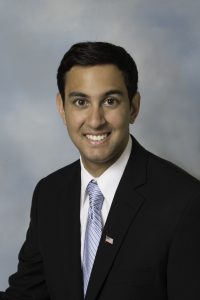Greg Jasani
September 18, 2017
Acute myocardial infarction (AMI) occurs when a mismatch between oxygen supply and demand in the myocardium of the heart leads to ischemia and ultimately cell death. Clinical guidelines currently support the routine use of supplemental oxygen in patients experiencing an AMI.[1] The rationale for providing supplemental oxygen is to increase the oxygen delivered to the ischemic myocardium to limit the size of the infarct and reduce complications. Recently, however, the benefit of supplemental oxygen in these patients is being questioned. A 2016 Cochrane Review article concluded: “there is no evidence from randomized controlled clinical trials to support the routine use of inhaled oxygen in people with AMI...randomized controlled trials are urgently required to inform guidelines in order to give definitive recommendations about the routine use of oxygen in AMI”.[2]
Yet recently, an article published in the New England Journal of Medicine filled that need. The Determination of the Role of Oxygen in Suspected Acute Myocardial Infarction (DETO2X-AMI) trial was a randomized, controlled clinical trial that compared supplemental oxygen to room air in patients with suspected AMI.[3] The trial enrolled patients 30 years of age or older, had a suspected MI (defined as a chief complaint of either chest pain or shortness of breath), with an oxygen saturation of 90% or greater, and with EKG changes suggestive of ischemia or elevated troponin at presentation. Patients were then randomized to either receive 6 L/min of O2 by facemask or to receive no supplemental oxygen therapy. The primary endpoint was all cause mortality at 1 year. Additionally, the authors measured all cause mortality at 1 month, re-hospitalization with MI, re-hospitalization with heart failure, and cardiac-related mortality.
Over 2 years, 6,629 patients were enrolled through 35 participating hospitals in Sweden. Of these, 5010 were ultimately found to have an MI. A total of 3311 were randomized to the supplemental oxygen group and 3318 to the ambient-air group. All cause mortality at 1 year for patients who received supplemental oxygen was 5.0% compared to 5.1% for patients in the ambient-air group (p = 0.80). The authors also found no significant differences between the two groups with respect to all cause mortality at 1 month, re-hospitalization with either an AMI or heart failure, or cardiac mortality. Additionally, troponin levels did not significantly differ between the two study groups.
The DETO2X-AMI study showed that administering supplemental oxygen to non-hypoxic patients with suspected AMIs did not improve mortality at either one month or one year. Additionally, administration of oxygen did not appear to affect infarct size as both groups had similar troponin levels. To date, the DETO2X-AMI trial is the largest randomized controlled clinical that evaluates the use of supplemental oxygen in AMI. Its findings cast doubt on the benefit of routine oxygen therapy in these patients. With this evidence, clinicians should consider supplemental oxygen ineffective in AMI patients without hypoxia, and ultimately it may be removed from clinical guidelines.
References:
[1] Roffi M, Patrono C, Collet JP, et al. 2015 ESC guidelines for the management of acute coronary syndromes in patients presenting without persistent ST-segment elevation: Task Force for the Management of Acute Coronary Syndromes in Patients Presenting without Persistent ST-Segment Elevation of the European Society of Cardiology (ESC). Eur Heart J 2016;37:267-315
[2] Cabello JB, Burls A, Emparanza JI, Bayliss SE, Quinn T. Oxygen therapy for acute myocardial infarction. Cochrane Database Syst Rev 2016;12:CD007160-CD007160
[3] Hofmann R, James S, Jemberg T, Lindahl B, Erlinge D, Witt N, et al. Oxygen Therapy in Suspected Myocardial Infarction. N Eng J Med. Published online August 28, 2017
Greg Jasani is a fourth year medical student at the GW School of Medicine & Health Sciences


